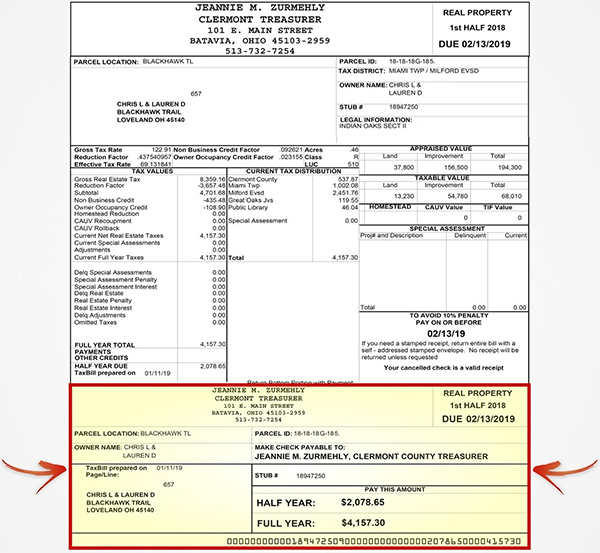Here are the steps needed to understand your tax bill.
NOTE: THE BELOW EXAMPLE IS A SAMPLE BILL
NOTE: THE BELOW EXAMPLE IS A SAMPLE BILL
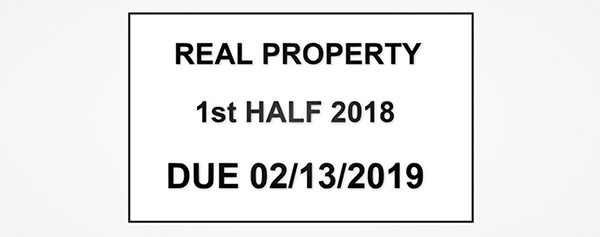
This is the Due Date for first half taxes to avoid a late fee. Second half taxes will have a different due date. The assessed taxes are for the prior year and payable in the current year. You can find this information in the upper right corner of your bill as well as at the bottom of the page.
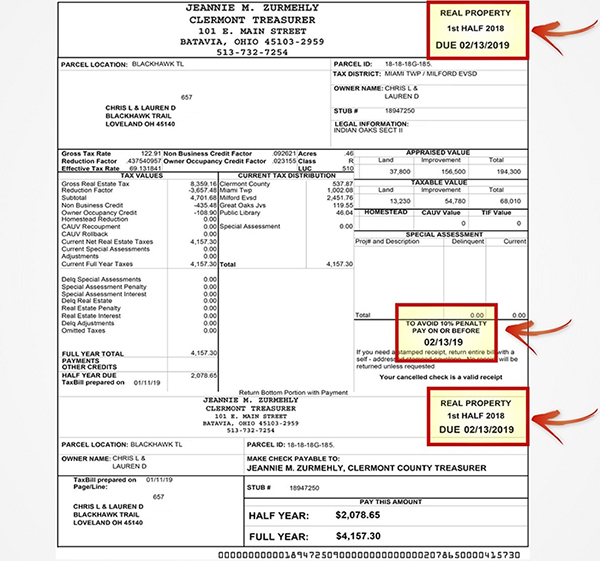

This is the information listed on the current tax rolls as the ownership and tax mailing information for the property. Please review this information carefully. If there are any problems with this information please contact us.
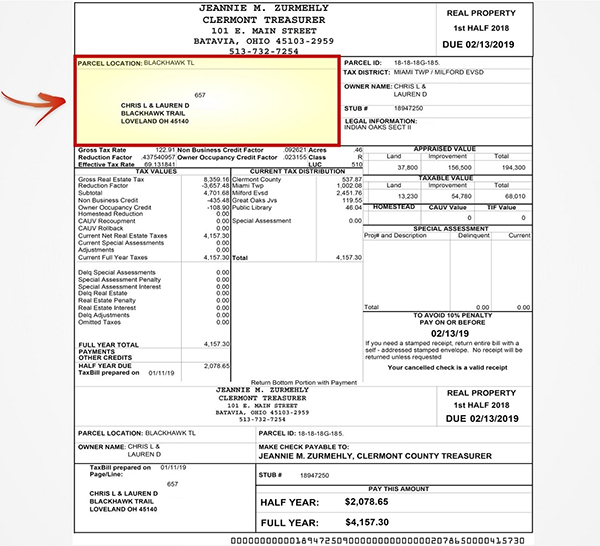
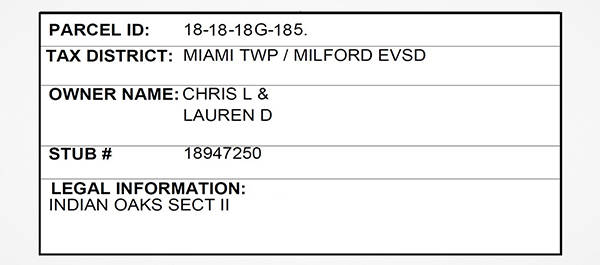
You are able to find different specific pieces of identification for your property such as the Parcel ID, which is the unique identifier for each parcel, the Tax District that determines your gross tax rate and the distribution, as well as legal identification such as the subdivision your property is in. The owner name included here is as of January 1st of the prior year and may be different than what is listed on the tax mailing information. Please have your Parcel ID available when contacting our office.
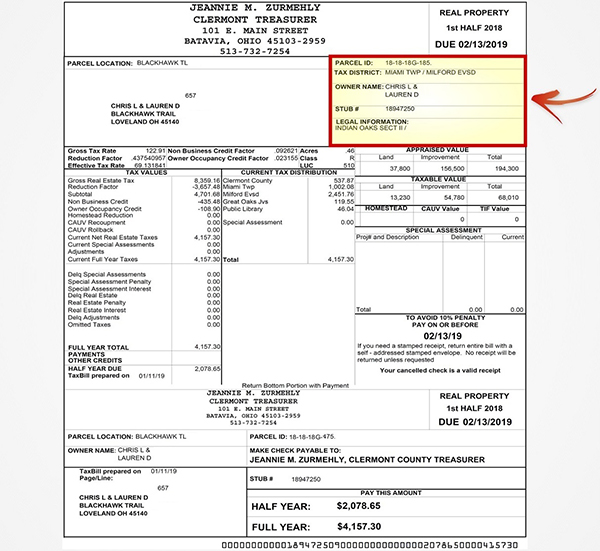

The Gross Tax Rate is the millage assigned when the tax levies were originally passed. A levy cannot generate more or less revenue than when it was originally passed. Because of this there is a reduction factor that is established by the state and applied to your Gross Tax Rate to produce the Effective Tax Rate. The Effective Tax Rate is then multiplied by your Taxable Value to produce your tax due prior to applicable deductions.
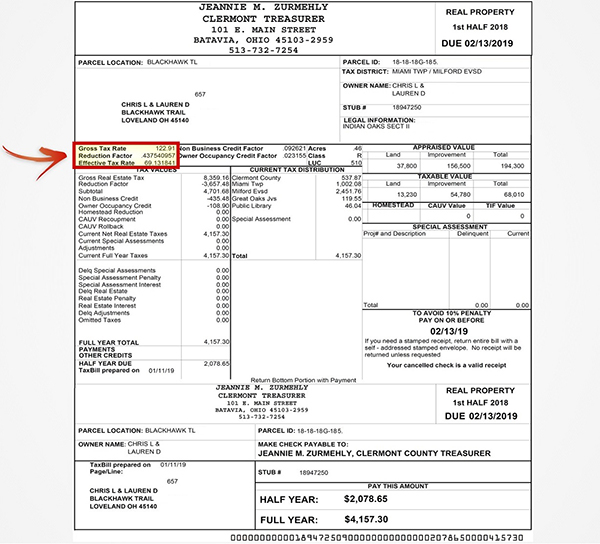
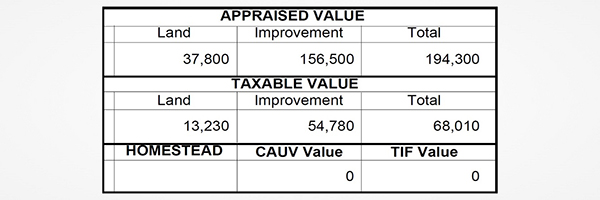
The Appraised value is our opinion of what your property would sell for on the open market. The Taxable value is 35% of the Appraised Value and is what your tax amount due is based on prior to any credits being applied. If you have questions about how we arrived at your Appraised Value please contact our office. If you are enrolled in the Homestead or CAUV (Current Agricultural Use Valuation) program a value will appear in the appropriate box. If your property is located in a TIF District (Tax Increment Financing) the value assigned to the TIF District will appear in the TIF Value box.
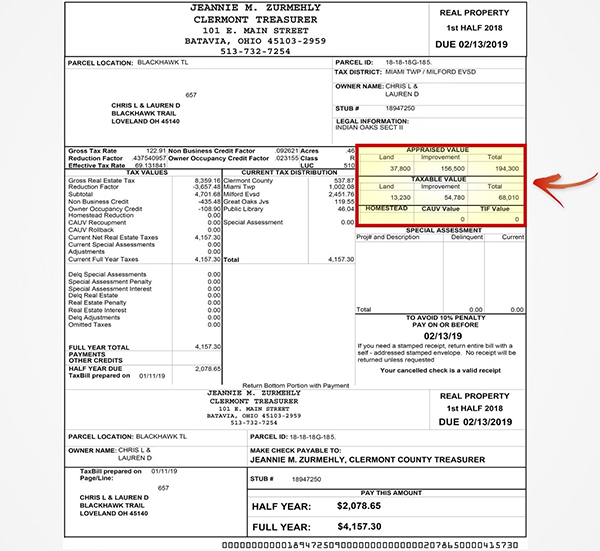
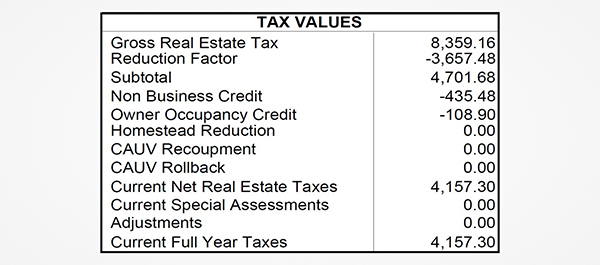
This section details your tax calculation for the full year and any applicable reductions such as the Non Business Credit, the Owner Occupancy Credit, or the Homestead credit. This area also includes the addition of any CAUV Recoupments or Special Assessments. If you would like a more detailed explanation of these credits please visit their respective pages on our website or contact our office.
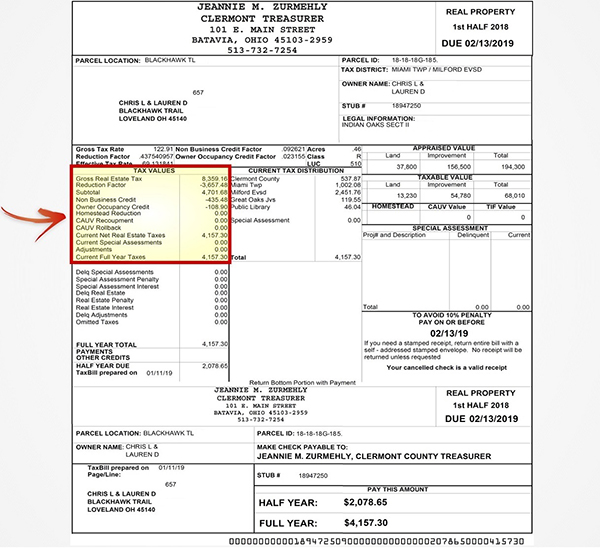
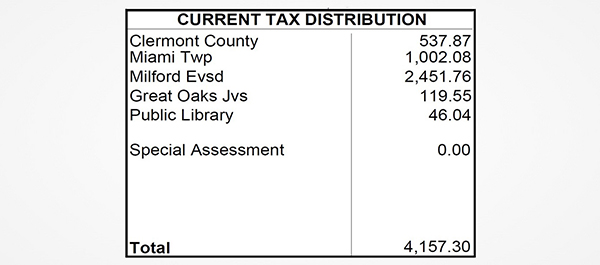
This shows you where your tax dollars are allocated after collection.
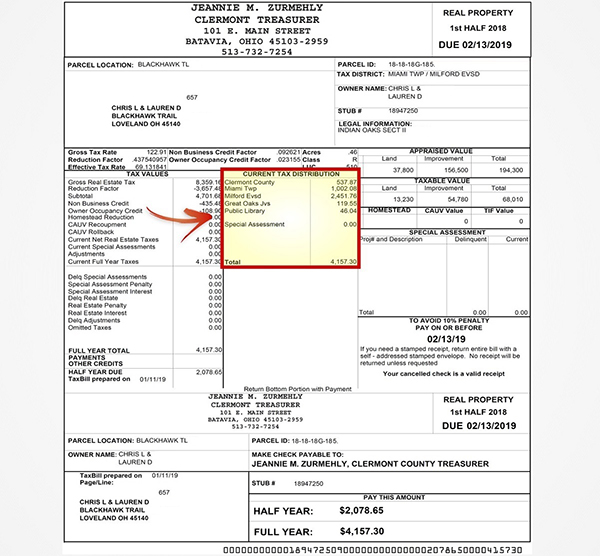
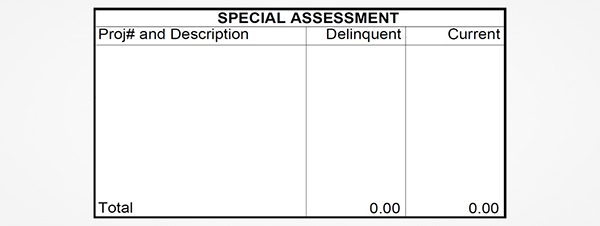
These tax assessments, known as special assessments, are localized additional charges that may include assessments for items such as lighting districts, stormwater drainage, sewer, and special improvement districts. The first digit of the project number will indicate if it is a County – 1 or a Township – 2 or a City – 3 assessment. Not all properties are within a special assessment region, if you are it will be itemized on your tax bill.
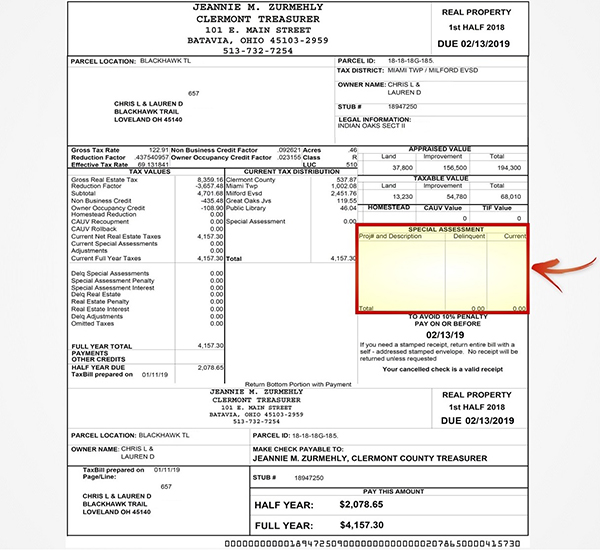
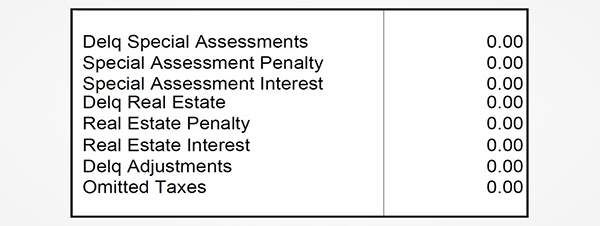
This section includes any delinquent real estate taxes and associated penalties and interest, delinquent special assessments and associated penalties and interest, and any omitted taxes. If you have questions about this please contact our office.
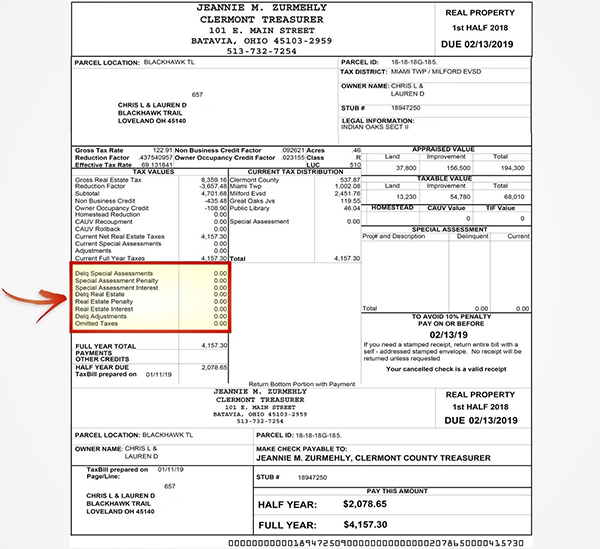
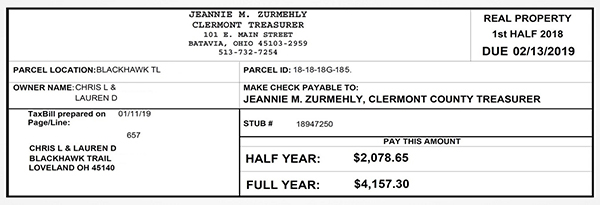
This section of your tax bill provides you with the stub to remove and return with your tax payment. It covers items such as where to mail your check, your parcel identification information, the due date, and the amount due for the full year and half year.
